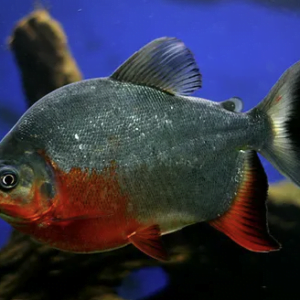Red Neocaridina Shrimp
Red cherry shrimp (Neocaridina davidi) are a vibrant and popular choice for freshwater aquariums, prized for their bright red color and easy care. They thrive in tanks of at least 5 gallons, with fine gravel or sand substrate, live plants like Java moss, and gentle sponge filters.
Earn 0.40 Reward Points₱50.00 Original price was: ₱50.00.₱40.00Current price is: ₱40.00.
Your live fish may not match the image shown due to natural variations in each species. Each companion animal is different in shape, color, and personality.
Scan to Purchase
Red cherry shrimp (Neocaridina davidi) are a popular choice for aquarium enthusiasts due to their vibrant color and relatively easy care requirements. Here’s a comprehensive care guide to help you keep your red cherry shrimp healthy and thriving:
Tank Setup
- Tank Size: A minimum of 5 gallons is recommended for a small colony of red cherry shrimp. Larger tanks are preferable as they provide more stable water parameters and more space for the shrimp to explore and breed.
- Substrate: Fine gravel or sand is ideal. Darker substrates tend to enhance the shrimp’s coloration. Adding leaf litter or botanicals can also provide a more natural environment.
- Plants and Decorations: Live plants are highly recommended as they provide hiding places, biofilm for the shrimp to graze on, and help maintain water quality. Java moss, Anubias, and Java ferns are popular choices. Driftwood and rocks can also be added for additional hiding spots and surface area for biofilm growth.
- Filtration: A sponge filter is ideal as it provides gentle filtration without posing a risk to shrimp. It also provides additional surface area for biofilm growth. Make sure any filter used has a cover or sponge over the intake to prevent shrimp from being sucked in.
- Lighting: Moderate lighting is sufficient. Too much light can lead to excessive algae growth, while too little light can inhibit plant growth.
Water Parameters
- Temperature: 72-78°F (22-25.5°C) is ideal. Avoid sudden temperature changes.
- pH: Slightly acidic to neutral (6.5-7.5).
- Hardness: Soft to moderately hard water (4-8 dKH for carbonate hardness and 6-8 dGH for general hardness).
- Ammonia, Nitrites, and Nitrates: Ammonia and nitrites should be at 0 ppm. Nitrates should be kept below 20 ppm. Regular water changes (10-20% weekly) can help maintain these levels.
Feeding
- Diet: Red cherry shrimp are omnivores. They will graze on biofilm, algae, and detritus in the tank. Supplement their diet with high-quality shrimp pellets, algae wafers, blanched vegetables (such as zucchini, spinach, and carrots), and occasional protein sources like bloodworms or brine shrimp.
- Frequency: Feed small amounts once a day. Remove any uneaten food after 2-3 hours to prevent water quality issues.
Tank Mates
- Compatibility: Red cherry shrimp do well with small, peaceful fish such as neon tetras, guppies, and dwarf rasboras. Avoid keeping them with large or aggressive fish that may see them as food.
- Other Invertebrates: They can coexist with other non-aggressive shrimp species and snails.
Breeding
- Environment: A stable, stress-free environment with plenty of hiding spots will encourage breeding.
- Mating: Females carry eggs under their tail until they hatch. The eggs typically hatch in 2-3 weeks, releasing tiny, fully-formed shrimp.
- Juvenile Care: Ensure there is plenty of biofilm and algae for the young shrimp to feed on. Crushed flakes and baby shrimp food can also be provided.
Health and Maintenance
- Water Changes: Regular water changes (10-20% weekly) are essential to maintain water quality.
- Observations: Regularly observe your shrimp for signs of stress or disease, such as lethargy, color loss, or unusual behavior. Promptly address any water quality issues or infections.
- Quarantine: Quarantine any new additions to the tank to prevent the introduction of diseases or parasites.
Common Issues
- Molting Problems: Ensure the water has sufficient minerals (calcium) for healthy molting. Incomplete molts can be fatal.
- Poor Water Quality: Regularly test the water parameters and perform water changes as needed. Poor water quality is the most common cause of health issues in shrimp.
- Predation: Keep an eye on tank mates to ensure they are not preying on the shrimp, especially the juveniles.
By maintaining a stable and clean environment with proper nutrition and care, red cherry shrimp can thrive and add vibrant color and activity to your aquarium.
You must be logged in to post a review.
Related products
-
Koi Tuxedo Guppy
₱75.00 – ₱200.00 Select options This product has multiple variants. The options may be chosen on the product page









Reviews
There are no reviews yet.